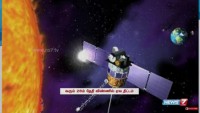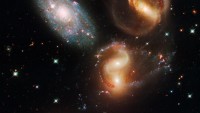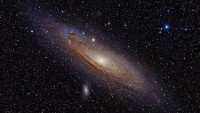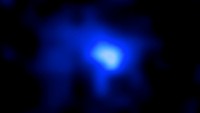Amazing Images Captured By The Hubble Telescope After A Star’s Death
| Darlene Tverdohleb | | Sep 26, 2015 11:38 PM EDT |
(Photo : Youtube) A supernova is shown and explained in a video.
The Hubble Telescope of the United States' National Space Agency (NASA) has captured one of the most insanely amazing photos taken in the outer space ever.
A star's violent death, which scientists of NASA believe was visible to our ancestors, around 8,000 years ago. It was short-lived bright point of light in the sky and left behind insanely amazing and beautiful cosmic veil, which the Hubble Telescope captured dramatically, according to Benchmark Reporter.
Like Us on Facebook
The supernova remnant that is known as Veil Nebula, a spiraling multicolored halo of gas that is 2,100 light years away from Earth, is still expanding from its original massive explosion about 18 years ago and was photographed by the space telescope.
The star was located in the Cygnus or The Swan constellation. Nebula's new images were created by overlaying images that were captured in 1997 by Hubble's Wide Field and Planetary Camera 2. More images were then captured from the space telescope's new Wild Field Camera 3.
The supernova's expanding wave of gas emitted is now 110 light years across. It produces light as it crashes at almost a million miles per hour into cooler and denser interstellar gas, NASA said.
As also stated by Tech Times, the Hubble images that have been newly released show merely two light years of the Nebula's extent, on its outer limb. The colors create a dazzling and amazing cosmic display---red from ionized hydrogen, green from sulfur, and blue from oxygen.
The Witch's Broom Nebula, which is scientifically tagged as NGC 6960, is the section of the supernova that has been captured by the space telescope. The whole Veil Nebula is one of the most known supernova remnants, which is created by a star that exploded that has a mass of 20 times the mass of the Sun.
The Nebula's distinctive delicate and draped structure, according to the astronomers, is the result of the gasses hitting the walls of a cavity in the surrounding interstellar gas created by a strong stellar wind that is emitted by the star before the explosion. The shockwave expansion produces the bright filaments that can be seen in the image, and variations in the temperatures as well as densities of chemicals in the walls are the ones that produce the different colors of the Veil Nebula.
TagsThe Swan constellation, hubble telescope, Supernova, nebula, interstellar gas
©2015 Chinatopix All rights reserved. Do not reproduce without permission
EDITOR'S PICKS
-

Did the Trump administration just announce plans for a trade war with ‘hostile’ China and Russia?
-

US Senate passes Taiwan travel bill slammed by China
-

As Yan Sihong’s family grieves, here are other Chinese students who went missing abroad. Some have never been found
-

Beijing blasts Western critics who ‘smear China’ with the term sharp power
-

China Envoy Seeks to Defuse Tensions With U.S. as a Trade War Brews
-

Singapore's Deputy PM Provides Bitcoin Vote of Confidence Amid China's Blanket Bans
-

China warns investors over risks in overseas virtual currency trading
-

Chinese government most trustworthy: survey
-

Kashima Antlers On Course For Back-To-Back Titles
MOST POPULAR
LATEST NEWS
Zhou Yongkang: China's Former Security Chief Sentenced to Life in Prison

China's former Chief of the Ministry of Public Security, Zhou Yongkang, has been given a life sentence after he was found guilty of abusing his office, bribery and deliberately ... Full Article
TRENDING STORY

China Pork Prices Expected to Stabilize As The Supplies Recover

Elephone P9000 Smartphone is now on Sale on Amazon India

There's a Big Chance Cliffhangers Won't Still Be Resolved When Grey's Anatomy Season 13 Returns

Supreme Court Ruled on Samsung vs Apple Dispute for Patent Infringement

Microsoft Surface Pro 5 Rumors and Release Date: What is the Latest?














